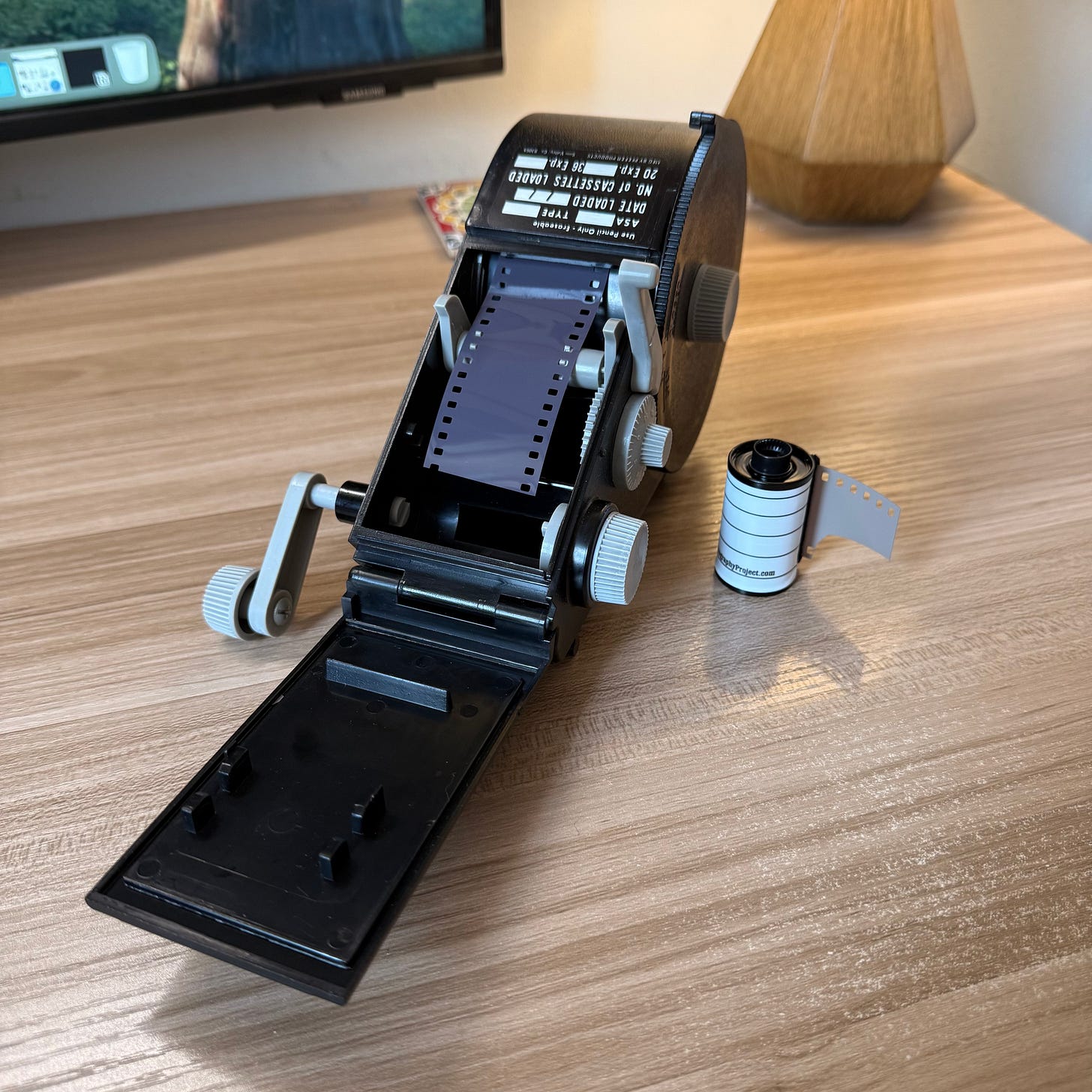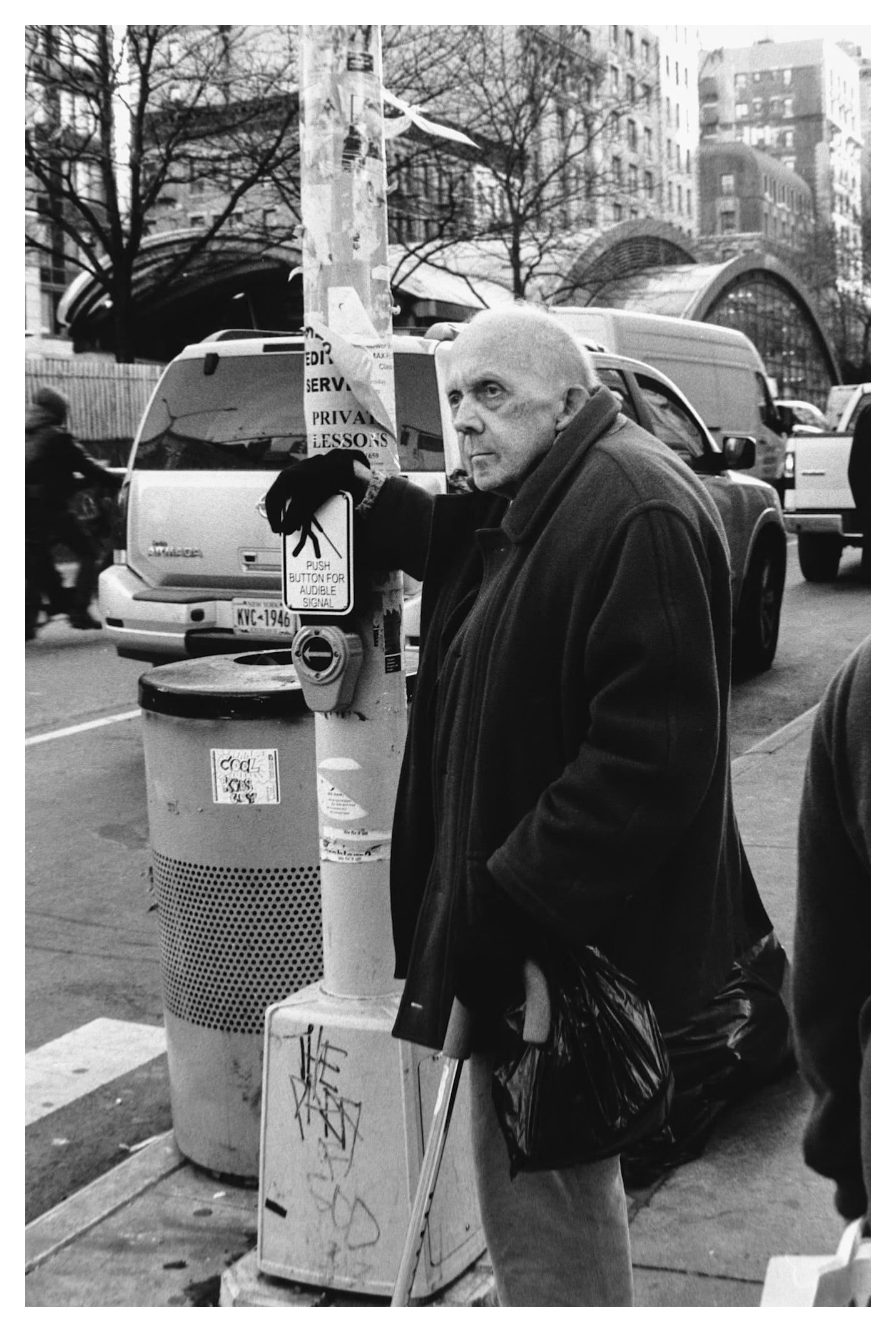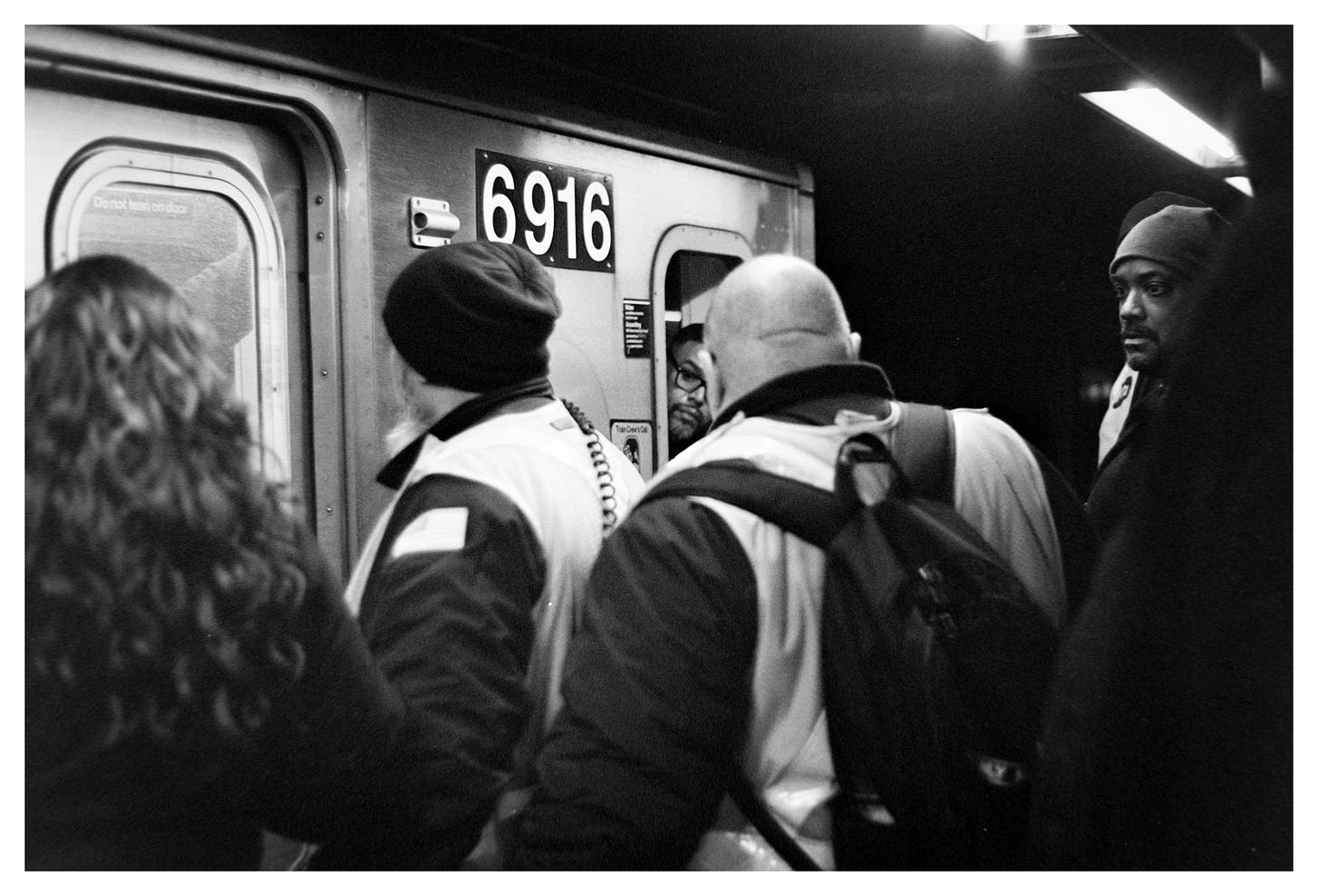Shooting film is expensive.
Some rolls of 36 exposures are now costing upwards of $20/roll. That, of course, does not including the cost of development, scanning, and/or printing.
Film photographers are often looking for ways to cut costs, and a fairly simple and reasonable way to do that is by bulk loading your own rolls.
Let’s take a look at the process, what you need, and why it might work for you.
Why you should do it?
The main reason to bulk load your own film is to save money.
Purchasing a 100’ roll of film should yield about 18 rolls of film with 36-exposures each. While bulk-buying 100’ of film will no doubt be a steeper initial investment than buying one roll at a time, the cost savings over the course of the 100’ adds up.
When considering just the cost of the film alone (see below for more detailed cost analysis), I purchased 100’ of Kentmere Pan 400 black-and-white film for $74.99. If I get 18 rolls out of it, that will be a cost of $4.17/roll.
Compare that to the $6.95/roll Pan 400 retails for at my local film shop, and I’d be at $125.10 after 18 rolls.
That’s a difference of $50! Not bad. Of course, that doesn’t consider the cost of equipment needed to roll your own film (again, see below).
But saving money on the cost of film means I think less about clicking the shutter when I’m out on the street, and who knows, maybe that will mean capturing a moment I might have previously thought twice about.
Additionally, it also means that $50 in savings can go toward developing the rolls I shoot, which currently costs a little under $10/roll.
What you need
Of course, cost savings can only begin once you have the equipment you need to begin bulk rolling your own film. Fortunately, the start up costs are not that significant.
Here’s what you need, and what I was able to purchase these items for:
Bulk roll of film.
I purchased Kentmere Pan 400 for $74.99. I chose this film because it’s cheap and if I messed up rolling my film it wouldn’t sting quite so bad. Next time I buy 100’, I’ll probably get something more professional such as Ilford’s HP5 Plus or Kodak’s 400TX.
Bulk film loader.
There are a number of different models out there at varying price points. Some of the common models are the Lloyd’s roller (and various copies of it) and the Western Model No. 100, which is what I purchased. I picked up my Western Model No. 100 for $25 on eBay. Considering that some loaders are going for more than $50, I thought that was a pretty good deal. Also, I picked the Western Model No. 100 because it’s very simple and easy to use.
Note: Make sure if you purchase a bulk film loader that you have a daylight version. You want to be able to use the roller in normal lighting conditions after you load the 100’ roll inside it. This will make rolling much easier.
Dark bag.
This is nothing more than a portable dark room. Because the 100’ roll of film must be loaded in COMPLETE darkness (not even a red safe light is OK), the dark bag provides a way to do so without the need for a dark room. These bags often have multiple layers of light-protective material and two holes in the side for your arms to enter and handle your film. They come in varying sizes and the larger you pick up, the easier it is to maneuver.
Empty film canisters.
These are simply the metal or plastic canisters into which you will roll your film. You can purchase empty canisters, which will require you to tape your bulk roll to the spindle inside. Or, you can purchase used canisters that have a small leader of film to which you can tape your bulk film and then roll it into the cartridge. (See tutorial video for demonstration.)
I went with a 10-pack of used canisters that I purchased from the Film Photography Project. They weren’t particularly pricy, and I hope to ask my local lab to return the canisters to me after I get them developed so I can reuse them. Otherwise, you can pick up bulk lots of these on eBay for not a lot of money.
Scissors and tape.
Tape is needed so that you can secure the bulk roll to the canister and then roll it inside. People recommend artist’s tape. I used scotch and did not have a problem. The only thing you want to make sure is that the film is nice and secure because nothing would be worse than shooting an entire roll of film, only to have it detach from the spindle and then you can’t rewind it inside your camera.
Scissors are needed to cut your bulk film and free the canister after you’ve rolled it.
All-in with tax and shipping for the supplies I needed, I spent $152.29 (film included).
Tutorial video
After you have the supplies you need to roll your film, watch the video above to see a step-by-step tutorial on how the process is done.
It’s really quite easy and you can get a roll of film completed in a matter of minutes!
Caveats
There are a few things to think about before jumping into rolling your own film:
Not a good option for color film
If you like shooting color film, this is probably not the route to take. There are very, very few bulk options out there to purchase. In fact, I’m not aware of any dedicated 35mm color photography film sold in 100’ rolls.
Instead, the bulk color film market is comprised of motion picture film that can be repurposed for still photography. But note — often motion picture 35mm film requires specialized development processes, so before you purchase make sure either you or your local lab can handle it.
Given this, bulk loading film is really relegated to those of us who shoot black-and-white. That said, I would encourage you to try shooting black-and-white for a number of reasons: It’s a different creative method than shooting color film in that you have to think differently about subjects and composition; you have more exposure latitude, meaning you don’t always have to nail exposure to end up with a good shot — great for beginners; and black-and-white photographs naturally have a timeless look to them, which many photographers are after simply by shooting on this medium.
Economies of scale
This second thing to consider is whether you shoot enough to make this worth while. That’s because the savings you’ll see from bulk rolling your film come with time.
If we assume 100’ of film will yield 18 rolls (conventional wisdom), then my first 18 rolls of Kentmere Pan 400 actually cost me $27 more than if I had bought 18 rolls of it at retail cost. This is because of the initial startup costs required to bulk roll your film.
I’ll begin saving money by my second roll of 100’ and you can see the savings continue to climb with each subsequent bulk roll.
Now, to be realistic, 54 rolls is a lot of shooting. It’s going to take some time for the equipment to pay itself off and for the savings to be realized.
As mentioned, I went with Kentmere Pan 400 because of how cheap it is. It kept my startup costs low and if I messed something up I wouldn’t be out as much money as if I had purchased a more professional film, such as Kodak 400-TX.
But wow! Look at the cost savings if I had started with Kodak 400-TX, which retails at my local film lab for $14.95/roll. If I purchased 100’ of this film for $168.95 and substitute that for the $74.99 I spent on Kentmere Pan 400:
I’d be on my way to paying back my equipment costs on the very first bulk roll and save hundreds over subsequent rolls!
So depending on how much you shoot and what type of film you select, your savings milage may vary.
You better like what you buy
Finally, the last thing to consider is whether you want to be shooting the same film all the time.
When you buy bulk film, unless you have the money and freezer space to buy and store multiple bulk rolls at a time, you’ll probably be shooting one type of film for a while.
That might not be a big deal if you have a stock you like shooting. For me, however, I know that Kentmere Pan 400 is a fine film, but it’s not my favorite. It’s a little grainy and not as sharp as other higher-end black-and-white films.
But, I think it’s good enough for my purposes right now so I think I’ll be able to work through the 18 rolls in a reasonable amount of time and not feel constrained.
Either way, there really isn’t much reason to rush. My box of Kentmere Pan 400 doesn’t expire until May 2029, and film can be useable for years after its expiration if stored properly. So even if I do buy a different type of film and use that for a while, I can always switch back and forth at any time.
Conclusion
As you can see, bulk rolling film is a great way to save money, invest in your photography, and add to your skill set.
The start up costs are relatively low and depending on the type of film you buy, you can see savings quite quickly. That’s money that can go toward development, scanning, and printing costs.
If you think bulk rolling might be a good option for you, then I would recommend giving it a try!
Any questions? Do you bulk roll your film? Has it been worth it?
Please leave a comment and let me know!







